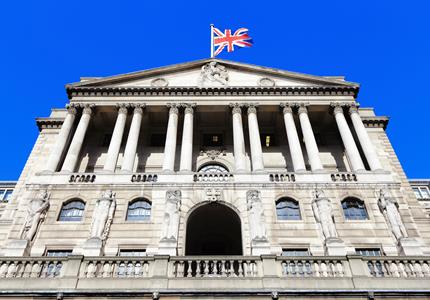

Weekly update - Interest rates either side of the pond
Our focus on interest rates has to take into account the two dominant themes – Brexit and Trump.
Boris Johnson has recently been confirmed as Prime Minister. Whilst this was expected, what happens next is less clear. On his selection by the Conservative Party he inherited the same parliamentary mathematics, but since then the Conservative majority has been whittled down to one following the loss of the Brecon and Radnorshire by-election.
Mr Johnson has chosen Brexit supporters for key cabinet posts who are happy to support a no-deal Brexit if the current deal, particularly the Northern Ireland “backstop”, with the EU cannot be substantially renegotiated. With Parliament opposed to a no-deal Brexit further significant political developments are pretty much inevitable including a snap general election. Of course this would be avoided if the EU capitulates and allows the back-stop to be dropped or amended from the current deal but at the time of writing the UK has just 30 days to propose a workable solution.
The effect of Donald Trump’s policy on US interest rates and global markets has been very significant since his 2016 election.
Tax reforms and support for US business and industry has underpinned a strong US economy which has been reflected by stock market gains with the Dow Jones index rising by over 6,000 points or over 34% since his election. Not content with this, Trump’s trade war with China, to secure a better US position, carries on. His views on US monetary policy – that interest rates are too high – are vigorous and he finally got his way when the Federal Reserve cut rates by 0.25% on 31st July. Despite the cut Trump wasn’t satisfied believing that Federal Reserve Chairman Jerome Powell had not gone far enough.
Turning back to the UK and the prospects for domestic interest rates. At the August meeting of the Bank of England’s Monetary Policy Committee “MPC” the long-standing line that an “on-going” tightening of monetary policy would be needed if the economy evolved in line with its projections was dropped. This implies that a rate hike is unlikely within the medium term even if a no-deal Brexit is averted.
The MPC remains of the view that UK economic growth will expand rapidly if a Brexit deal is agreed, primarily because it thinks business investment activity will rebound.
However, Brexit uncertainties have grown recently which will dampen economic activity and whilst this persists the MPC will remain in ‘wait and see’ mode, therefore all things being equal, Sterling interest rates should remain at or around current levels for the next 3 to 6 months.
As mentioned above the Fed cut US interest rates recently although Donald Trump would like the Fed to have done more. The EU is talking about cutting rates deeper into negative territory. So, the UK stands out as one economy where interest rates are on hold. The problem for the UK is Brexit and depending on its outcome UK interest rates could rise or they could fall.


